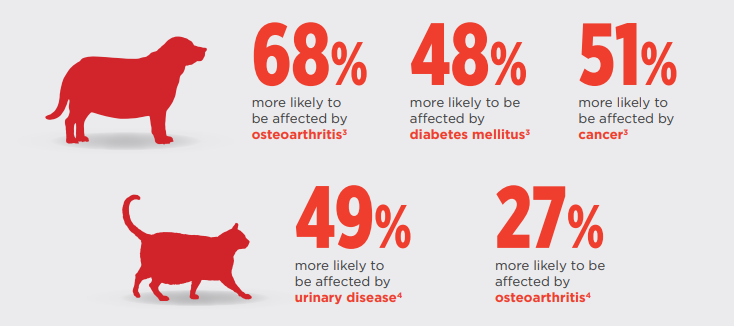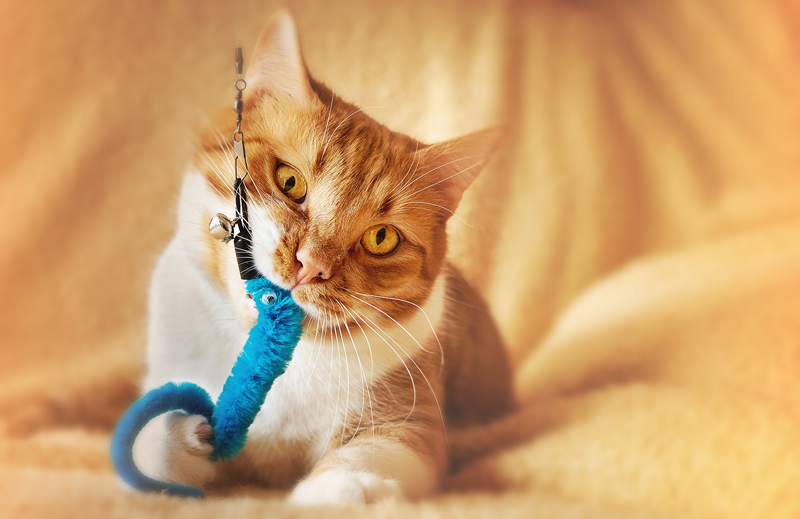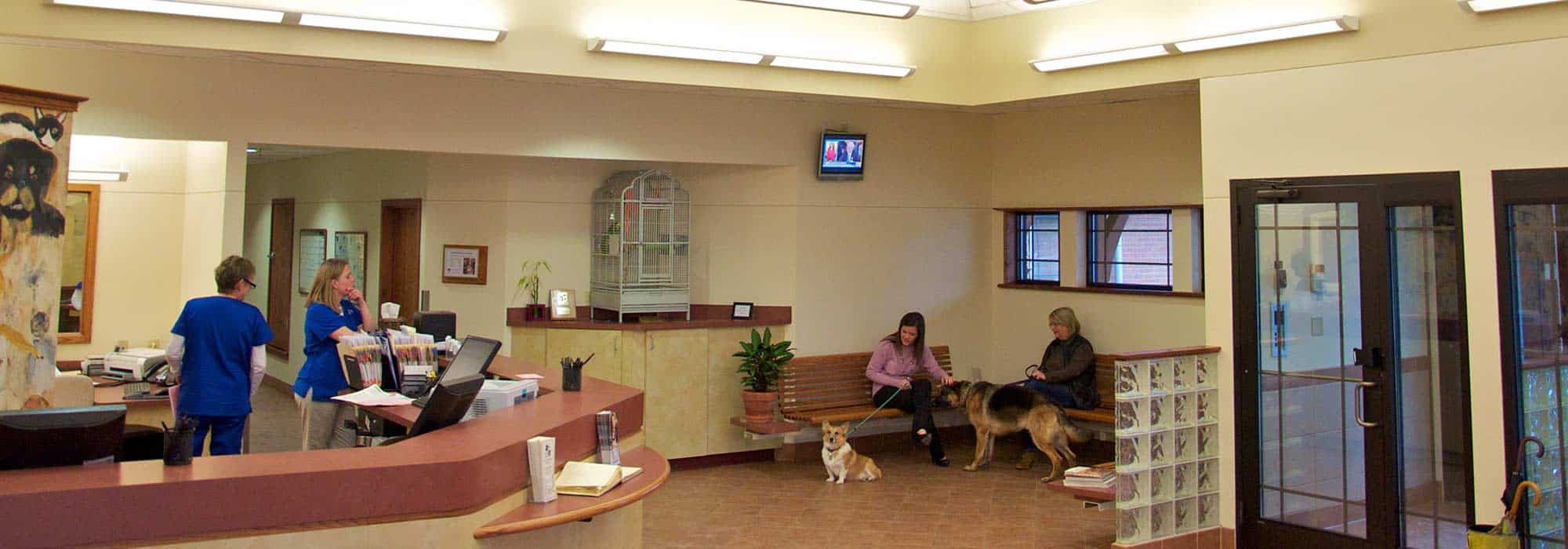Managing Diabetes in Dogs and Cats with Lifestyle

Help Your Diabetic Pet Live a Healthy Life
Diabetes in dogs and cats is a fairly common condition, with 1 in 300 dogs affected and up to 1 in 100 cats. Cornell Feline Health Center provides this definition of diabetes:
“Diabetes mellitus is a condition in which the body cannot properly produce or respond to the hormone insulin. This results in elevated levels of the sugar glucose in the blood, which is the main source of energy for the body.”
If your cat or dog has been diagnosed with diabetes, it’s important to manage the condition, so your pet can live their happiest, healthiest life.
A Healthy Weight is Important to Manage Diabetes in Dogs and Cats
One important goal in managing diabetes in dogs and cats is to get your pet to the lowest possible insulin dose that will control their symptoms. Achieving and maintaining a healthy weight is the best way to do that. Lean body weights requires lower doses of insulin, and an overweight pet will be more resistant to insulin.
Watch the video: A Healthy Weight is Important for Your Diabetic Pet
How Weight Affects Your Pet’s Health
Excess weight affects every aspect of your pet’s health– not just their diabetes symptoms. Pet Vet Veterinary Practice in New Zealand put together this sobering chart about weight-related conditions in cats and dogs.
Overweight Cats and Dogs Are…

Managing Diabetes in Dogs and Cats with Diet
The right nutrition is a key element in managing diabetes in dogs and cats. Importantly, you’ll want to stay consistent with your feeding schedule. Feed the same food each morning and evening with each insulin dose. Minimize snacks in between meals, especially any food containing carbohydrates.
For dogs, diets high in fiber are beneficial. The extra fiber helps with weight loss and improves blood sugar control. Minimizing high-fat foods is also important.
All cats thrive with a high-protein, low-carb diet. For cats with diabetes, it’s ideal to keep carbs at less than 10% of total calories and restrict fat.
Your veterinarian may recommend a prescription diet to manage diabetes in your dog or cat. These prescription foods are high in fiber and break down in the digestive system at a slow, regular pace.

Managing Diabetes in Dogs and Cats with Exercise
Exercise and regular activity are effective tools in controlling diabetes in dogs and cats, alike. There are three main benefits:
- Exercise promotes fat loss, which reduces insulin resistance
- Exercise expends energy that burns glucose
- Increased blood flow improves insulin absorption
Is Remission Possible?
Following AAHA’s Diabetes Management Guidelines for Dogs and Cats can effectively control diabetes in your pet. But will you ever get away from daily insulin injections? AAHA advises:
“In cats, diabetic remission is a reasonable goal. Excellent home care with dietary management, obesity treatment, and monitoring can lead to a cat no longer needing insulin therapy! Unfortunately, remission seldom occurs in dogs.”
By partnering closely with your veterinarian care team, you can help your cat or dog with diabetes live a full, healthy and happy life. Contact us to see about making your pet an appointment.

